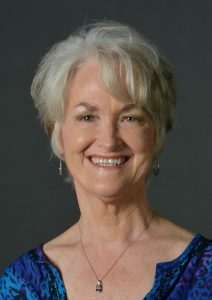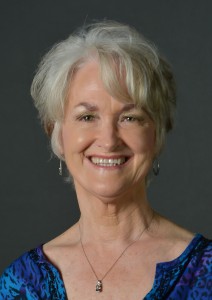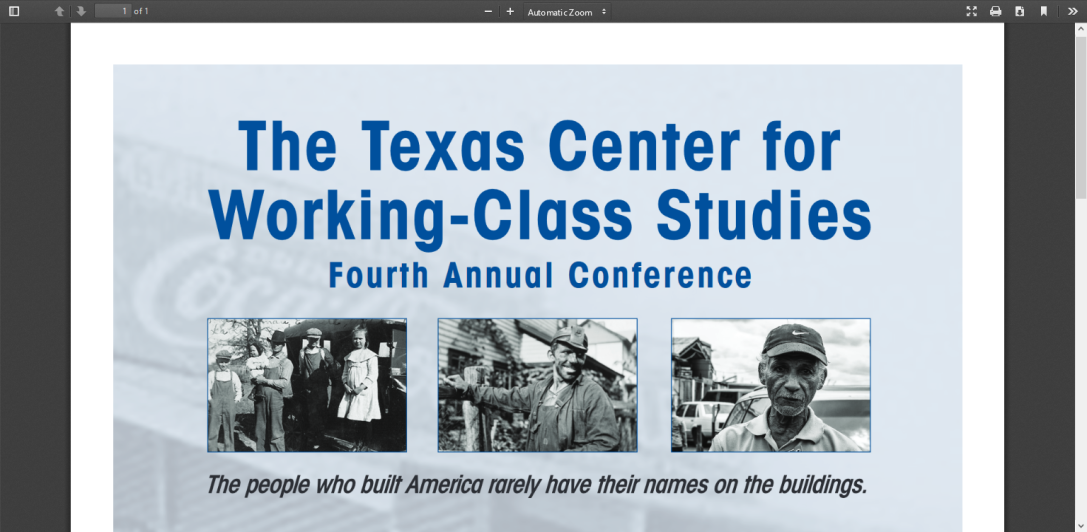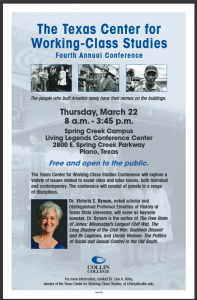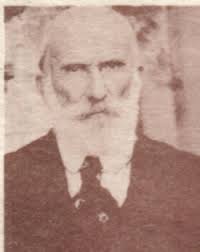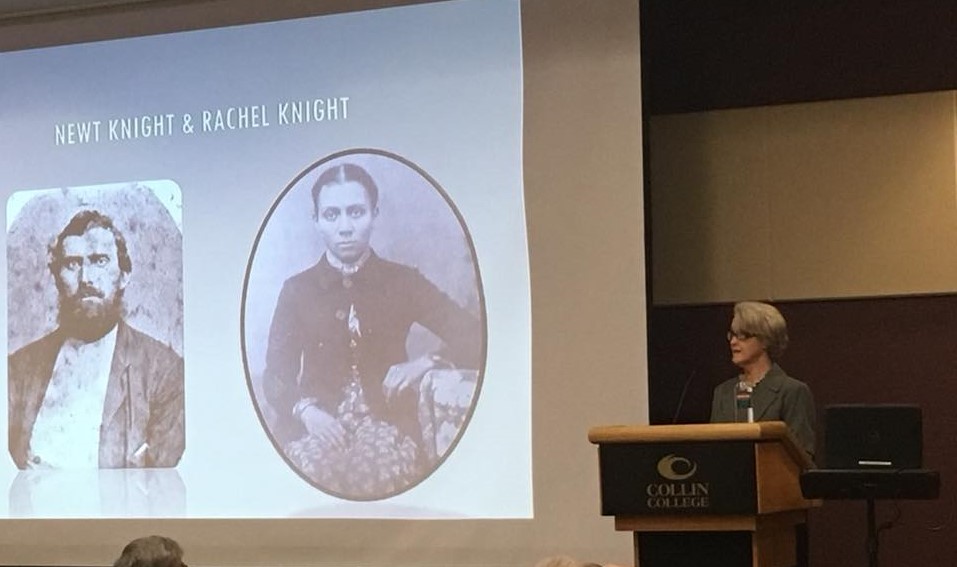An Interview with Victoria Bynum on The Free State of Jones
Victoria Bynum recently visited Southern Miss to kick off the 2016-2017 University Forum with a talk on her book The Free State of Jones and the movie it inspired. She is Distinguished Professor Emeritus of History at Texas State University, San Marcos, and a scholar of gender and race relations, as well as class, in the Civil War era South. Bynum has published three books and numerous articles, including Unruly Women: the Politics of Social and Sexual Control in the Old South (Chapel Hill: The University of North Carolina Press, 1992), winner of Phi Alpha Theta’s Best First Book award, which analyzed the effects of class, race, and war on female-specific crimes. In 2001, she published her now well known and respected study, The Free State of Jones: Mississippi’s Longest Civil War (Chapel Hill: The University of North Carolina Press), which documented Mississippi’s legendary uprising against the Confederacy and provided much of the research for the recent movie of the same name. Bynum’s third book, The Long Shadow of the Civil War: Southern Dissent and Its Legacies, (Chapel Hill: The University of North Carolina Press, 2010) expanded her research on Southern dissent to include Texas as well as North Carolina and Mississippi. In 2008, Bynum created the popular Civil War Era blog, Renegade South, which features her own and others’ research on political dissenters, Unionists, unruly women, and mixed-race families of the South. I conducted the following interview with Bynum in September 2016.

SU: What inspired you to write The Free State of Jones?
VB: As a college undergraduate, I stumbled on the legend of Jones County, Mississippi’s secession-within-secession in the footnotes of a Civil War text book. Because of my growing interest in the Civil War, plus the fact that my father was from Jones County, I was intrigued. But it wasn’t until I’d written my first book, Unruly Women, and inadvertently discovered the depth of opposition to the Confederacy among the white yeomanry of the North Carolina Piedmont, that I determined to make my second book about the Free State of Jones. The fierceness of community opposition to the Confederacy and the participation of women and children in these inner civil wars fascinated me.
SU: When you first wrote the book, what did it challenge at the time about home front dissent during the American Civil War?
VB: In both this book and my later works on Southern Unionism, I used military correspondence, local and federal records, and personal kinship information to show that class-based political ideologies as well as economic suffering contributed to home front dissent on the eve of and during the Civil War. This was not a new idea, but an affirmation of one long contested among historians. In the process, I detailed the extent to which civilian family members and local slaves directly participated in the Jones County insurrection, revealing the community nature of such dissent.
SU: How have Jones County and/or Unionist descendants responded to your book and to the film?
VB: Among descendants of Knight Company members, the response has been enthusiastic and ongoing through the years. Many descendants contribute family stories and participate in ongoing discussions about the Free State of Jones on my blog, Renegade South. These descendants are eager to take the story beyond stereotypes associated with desertion, and to explore the deeper causes of their ancestors’ dissent. Other Jones County descendants remember Newt Knight and the Knight Company as a band of traitors, criminals, and murderers. Not surprisingly, they reject the movie’s presentation of Newt as a hero. Some also reject my book’s analysis of the Jones County insurrection as a crisis of authority that centered on issues of class, slavery, and community survival.
The descendants of Newt and Rachel are eager to move beyond assumptions about interracial relations in the Civil War Era South, but without losing sight of the effects of racism, both then and now, on the experiences of the mixed-race Knight community. Some have expressed a desire for a fuller portrayal of Newt Knight’s interracial family than that provided by the movie.
SU: What do Rachel and Newt Knight tell us about racial and gender tensions and complexities in the mid-nineteenth-century South?
VB: A common remark made by twentieth century Jones County commenters is that Newt Knight’s crossing of the color line, rather than the wartime insurrection he led, was what turned local (white) people, including his own kinfolk, against him. Evidence of what whites thought of Newt and Rachel’s relationship during the war has yet to emerge. Legend suggests that Rachel aided the entire Knight band, not just Newt, in providing its members food and cover in hopes of gaining her own freedom. She’s been credited along with the wives and mothers of Knight Band members with disabling Confederate hounds by sprinkling the trails with ground glass and red pepper. So, while many whites would have disapproved of Newt’s open relationship with his grandfather’s slave, it appears that others may have accepted it as a product of war.
Newt’s reputation plummeted even among allies after the war as Democratic white supremacy replaced the reforms of Reconstruction. The instituting of racial segregation and the rewriting of the Civil War as a “lost cause” to preserve states’ rights contributed to the image of Newt Knight as a man guilty of both miscegenation and treason.
SU: What do the Unionists of Jones County tell us about class tensions?
VB: First and foremost, that those tensions existed. The inner civil wars that erupted throughout the Confederate South are largely inexplicable if white men are viewed simply as slaveholders and aspiring slaveholders. Under those terms, economic differences become nothing more than a gap between success and the failure to prosper. When denied a worldview, or an ethos, struggling farmers are typically described as primarily envious or resentful of their “betters.” Uprisings such as the Free State of Jones offer an alternative image of nonslaveholding, property-owning farmers. The core of the Knight Company was comprised of inter-related families who valued a way of life based on farming and herding. Although by 1850 even small farmers concentrated more and more on cash crops, in Jones County there was still a high degree of self-sufficient farming and stock-raising on the eve of the Civil War.
When we consider the decision by southwestern migrants to avoid plantation regions, combined with the nationalizing effects of the American Revolution and the War of 1812, widespread opposition to secession from the Union appeared a rational choice for the citizens of Jones County, Mississippi.
SU: You’ve received some criticism for dedicating only two chapters of the book to the American Civil War. Can you explain how and why you organized the book as you did?
VB: Because my training began as a historian of the Old South, I have tended to view the Free State of Jones as more a Southern story than as Civil War history per se. The war’s importance to that story is obvious. Death and destruction wreaked havoc on communities and lives, while slavery was destroyed in the process. A new democratic order was promised under Reconstruction, but was followed by a vicious counter-revolution. My goal was to explain why Jones County’s people reacted the way they did to secession and war, why the community divided along the lines it did, how the war changed people—for surely no one who survived it was left unchanged—rather than revisit the larger story of the Civil War. Without such historical context, the tendency is to view the Free State of Jones as Newt Knight’s war, and from there to assign him superhuman or demonic motives depending on one’s point of view about the Confederate cause.
To understand the community that produced the Knight Company, I devoted four chapters to tracing the historical events and geographic movement that shaped the lives of Jones County’s first generation of settlers. In so doing, I discovered that the American Revolution, religious revivals, and frontier wars profoundly shaped the consciousness of families that frequently migrated together, married among one another, and carved out settlements and communities along the way. By tracing this early history, I discovered the fault lines of Jones County’s future divisions over the war. That legacy of four horrific years of war is told in the book’s final two chapters, as well as in the introduction and epilogue that begin and end with Davis Knight’s miscegenation trial. The arc of the story thus bends from war and dissent to racial mixing, racial identity, and the law. We see that the Free State of Jones is really two stories, each with its own dramatic lessons, yet so tightly interwoven as to make them interdependent.
SU: Some impressive scholarship pushes the popular notion that the American Civil War was caused by the rich, but fought by the poor. Most notably, Joseph T. Glatthaar showed that wealthy white Southern men were overrepresented, not underrepresented, and served in all ranks, at least in the most famous of Confederate armies, Robert E. Lee’s Army of Northern Virginia. How does your book or the film challenge popular ideas of “a rich man’s war, but a poor man’s fight” and how have some persisted stubbornly?
VB: It is certainly true that Jones County’s more elite citizens were well-represented in the Confederate army and suffered their share of deaths, on and off battlefields. When considering the phrase, “rich man’s war and poor man’s fight,” it’s therefore important to understand the poor man’s “fight,” not in terms of numbers on the battlefield, but in terms of what the war cost him and his family. Perceptions of elite privilege in the ranks and reports of deprivation at home influenced common soldiers to turn against the Confederacy. Disgruntled conscripts might mistakenly believe that slaveholders escaped service in far greater numbers than they did, but they were correct in assuming that the upper-class’s eagerness for war reflected its tangible stake in victory—the protection of slavery. Small farmers especially resented the seizure of their produce and livestock under tax-in-kind laws, particularly when tax agents abused their prerogatives.
Political corruption drove many women and men to complain to authorities, especially when planters and merchants charged exorbitant prices for necessary staples that were particularly scarce because many planters grew cotton and tobacco instead of edible crops. Not surprisingly, they denounced the Twenty Negro law for giving these same planters and merchants the option of exemptions for themselves, sons, and employees. Similarly, bitter denunciations were hurled at millers, blacksmiths, and the like who gained exemptions as indispensable servants of the community. When denied the same exemptions, many men became convinced that elite connections made the difference.
SU: You mentioned recently that you would like to see someone expand on the story of Serena and Rachel Knight, getting us past the completely undocumented notion that they bonded as sisters through their shared relationship with Newt.
VB: During Rachel Knight’s lifetime, at least three masters owned and exercised control over her body. She was bought, sold, and raped; she gave birth to her first child at age 14. By the time she became associated with the Knight Band, Rachel was the mother of three, possible four, children.
In 1865, Rachel gave birth to Martha, believed to be the first of five children born to her and Newt Knight during the decade following the Civil War. Was this child the product of rape? If not, how did Rachel’s sexual relationship with Newt Knight differ from her previous ones?
No first-hand accounts from Rachel, Newt, or people who knew them personally inform us of how they felt about or treated one another. We are left to surmise the answers by examining stories passed down through several generations. There is reason to hope that more such accounts are forthcoming. For now, we know the following:
Rachel was never Newt’s slave, nor did Newt own slaves. A few Knight descendants have described both Newt and his parents as having opposed slavery. Their sexual relationship is assumed to have begun during the Civil War, when Rachel collaborated with the Knight Company against the Confederate army. After the war and emancipation, Rachel and her children moved to Newt’s farm, where they lived alongside his white family, including his wife Serena and their children. Newt continued to have children with both Rachel and Serena.
SU: How would you like to see a writer (historian or screen writer) investigate the question of consent in Rachel’s relationship (as an enslaved or recently freed woman of color) with Newt?
VB: When we talk about “consent,” we need to consider the above factors, but also the historical context in which this interracial household emerged in the postwar South. Freed women such as Rachel had few options for making a living and supporting a large household of children beyond unremitting farm labor. Racism was rife in this ardently patriarchal society in which white men had dominance over black women and white women of their own class.
Future historians or screenwriters must therefore examine “consent” within stark social, economic, and political realities. Newt Knight openly acknowledged his and Rachel’s children. He deepened their family ties when he presided over the intermarriage around 1878 of two of Rachel’s children with two of his and Serena’s children. He also deeded land to her and their children, and helped arrange for the children’s education. Further suggesting Rachel’s consent is the fact that she remained with Newt until her death in 1889 at age 49.
Future researchers should also examine the circumstances under which Serena Knight “consented” to Newt and Rachel’s relationship. Although Serena was white, her options were limited by class and gender. I’ve seen no evidence that she left Newt’s household during the war despite the movie’s portrayal of her doing so. Rather, she seems to have endured her husband’s second family, and perhaps accepted it as her own. If she had objected, where might she have fled? Family narratives suggest that the entire family was ostracized. By 1880, it appears that Serena was as much a part of the mixed-race Knight community as any other member. Two of her children had by then intermarried with Rachel’s children. Their children were her grandchildren as well as Newt and Rachel’s.
Between 1870 and 1920, Newt Knight maintained a lifestyle condemned by white society. He was the patriarch of a mixed-race community that by most descendants’ accounts was a benevolent one. Still, like most men of his day, Newt appears to have exercised authority over his wife, lovers, and children. As free women, Rachel and Serena’s consent to their lives with Newt is implied, but, without their own words, the level of choice they exercised remains speculative.
SU: How did you feel about having a topic you have worked on so closely become a Hollywood movie? Did you have actors in mind to play the characters when you first knew the movie rights have been purchased? Did you have any influence on that?
VB: I was quite excited in 2005 to learn from the University of North Carolina Press that my book, The Free State of Jones, had been optioned by Hollywood. Even more exciting was when the movie went into production ten years later. My biggest adjustment was coming to terms with the transition to screen of a story that I’d studied for years and written about in great detail. You might say I knew too much. I played no role in casting the actors, which was no doubt for the best. Although I enjoy watching old movies, and often showed them in the classroom to demonstrate historical points of view, I rarely watch first-run movies. I learned a lot, however, from visiting the set of Free State of Jones, and consulting with director Gary Ross. In the process, I came to appreciate the creative genius and sheer work required to transform a complex story into 2 ½ hours of plot, dialogue, and action.
SU: What can movies illuminate that books cannot (and visa versa)? Did the film miss some key points that you wish viewers understood?
VB: Through images, action, and dialogue, the movie Free State of Jones dramatically compressed and conveyed the horrors of war and Newt Knight’s consequent evolution into an articulate, class conscious leader and opponent of that war. Likewise, the haunting, foreboding beauty of the swamps and the yelping of bloodhounds hot on the trail of deserters elicits far more emotional intensity from audiences than most authors of academic books dare hope for. On the other hand, for those who relish the fine details of a true story, backed up by documentation and historical context, there’s nothing like a well-sourced book, footnotes and all. Historically-based movies and historical works are in fact complementary. Both should inspire and inform us, despite appealing to our different senses; both should make us want to know more.
Overall, I hope that movie-goers will want to know more about the community’s involvement in Jones County’s insurrection. Newt Knight was neither the first nor the best known Unionist of Jones County. The ensuing inner civil war that spread throughout southern Mississippi featured numerous leaders, and was duplicated in other communities throughout the South. Likewise, the full story of Newt and Rachel, the mixed-race community, and the Davis Knight trial of 1948 presents a far more complex story of race in American than possible in an already over-burdened screenplay. Likely this story requires a movie of its own, perhaps a sequel of sorts in which the Civil War and Reconstruction provide the backdrop.
SU: Did you find the actors true to the biographies of the historic figures they were playing? Was the casting credible?
VB: The three major members of the Knight band—Newt Knight, Jasper Collins, and William Sumrall—were well cast and credibly portrayed within the limits of a Hollywood movie. Because Jasper Collins was the most clearly Unionist of the three, I would like to have seen his character expanded.
My chief difficulty with the cinematic Newt Knight is the level of Baptist religious devotion ascribed to him. I found no evidence that Newt was more than conventionally religious. In a worshipful biography filled with inaccuracies, Newt’s son, Thomas Jefferson Knight, claimed that Newt joined a Primitive Baptist church around 1886, but there is no corroborating evidence for this, and in any case it would have been long after the war and Reconstruction ended. There’s better evidence that Newt and Rachel Knight briefly joined the Mormon Church around 1883, perhaps in hopes of gaining sanction for their marriage.
SU: Was the film’s setting credible, too?
VB: The landscape and swamps of Louisiana captured the feel and appearance of Civil War Mississippi quite effectively. A charming replica of the town of Ellisville, Mississippi, was rebuilt in Louisiana. Still, many Jones County descendants pointed out that their slaveholding ancestors lived in far more modest structures (reflective of Jones County’s location outside the plantation belt) than those presented in the movie, and that the elegant old court house of Clinton, Louisiana, bore little resemblance to the modest court house of Ellisville where Davis Knight’s trial took place in 1948.
SU: Did the film/directors slant or skew any key historical events?
VB: Many of the movie’s most dramatic scenes—the interracial composition of the Knight Band, the postwar Union League meeting, the lynching of Moses Washington—are plausible but not documented for Jones County. There is plenty of evidence of interracial collaboration between deserters and slaves during the Civil War, and about Union Leagues and lynching during Reconstruction. There is no hard evidence, however, that Newt allied with maroons in the swamps, or that men of color joined the Knight Company. Likewise, while there is solid evidence that Newt Knight served in the Radical Republican Administration of Adelbert Ames, there is no evidence that he participated in a Union League organization. Finally, because Moses Washington is a fictional character, so is his murder. Nonetheless, it does have historical precedent in Jones County. A similar lynching of a politically active freedman, Sandy McGill, is described in two separate oral interviews that were conducted some 45 years after Reconstruction. And, of course, there is ample documentation of the lynching of black men throughout the South during Reconstruction.
SU: Did the musical score capture the period, events, and drama behind the Newt Knight’s movement?
VB: I found the musical score pleasant and unobtrusive. The ending song by Lucinda Williams (a songwriter and performer whose work I greatly respect) was haunting and sad, suggestive of an era filled with political violence and personal angst. The movie’s producers might more effectively have dramatized the story’s key events, however, by incorporating some of the fine songwriting and dynamic performances of less well-known artists who over the years have set the story of the Free State of Jones to music.




















